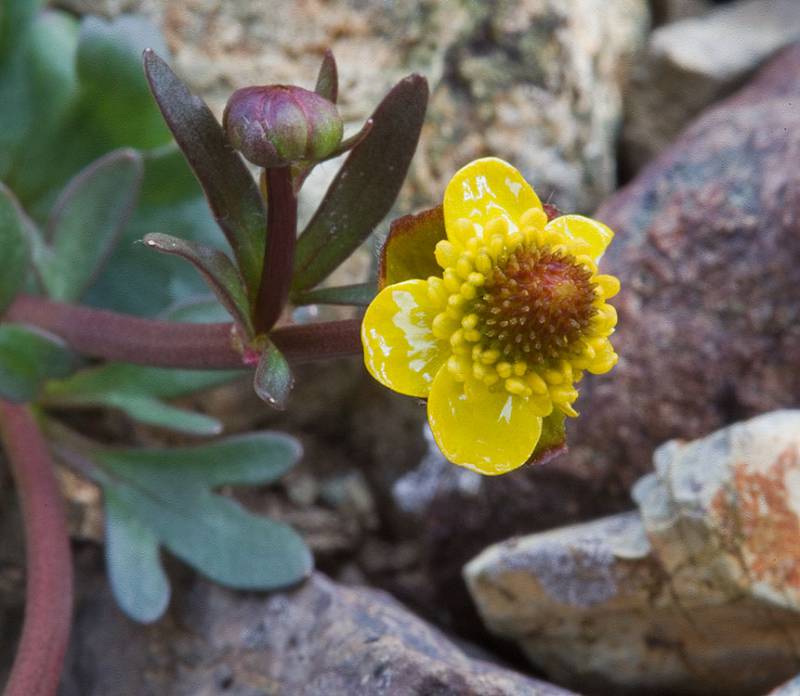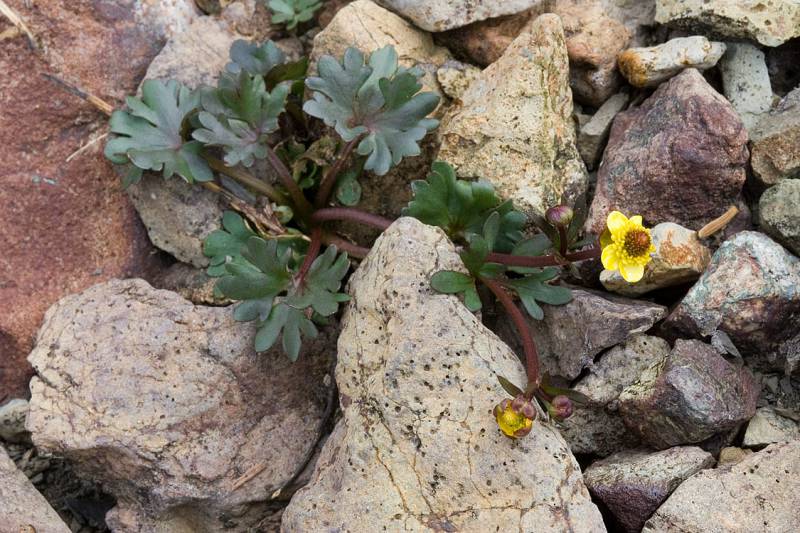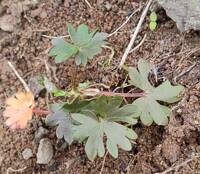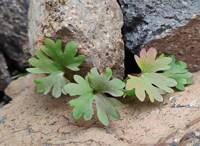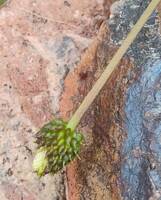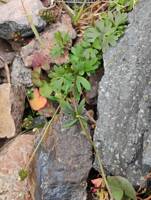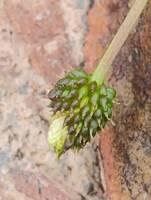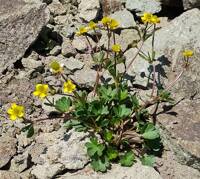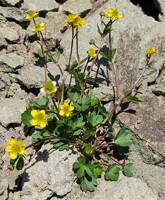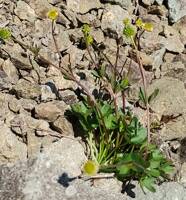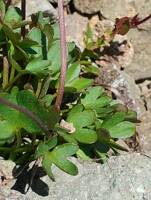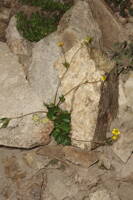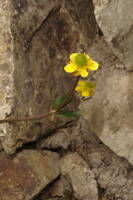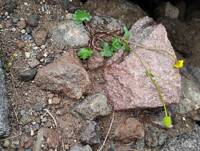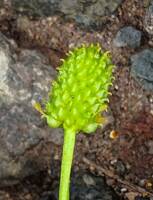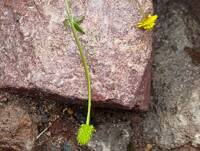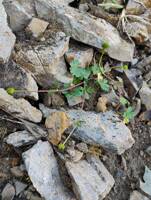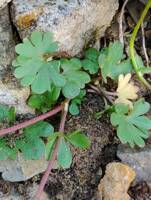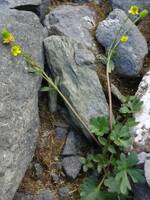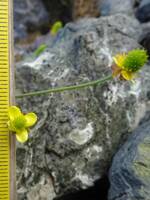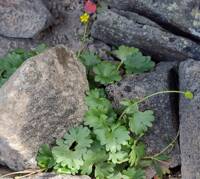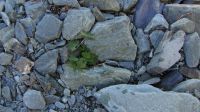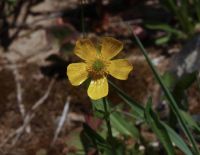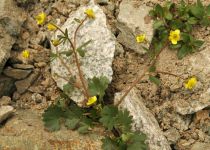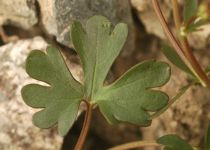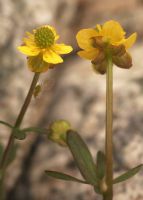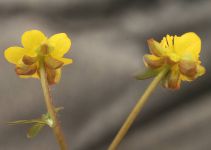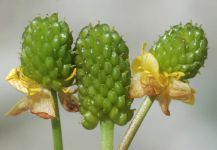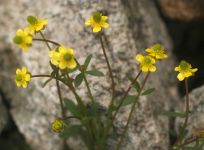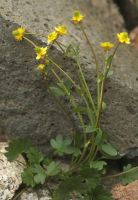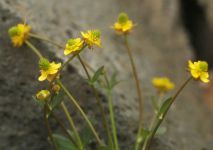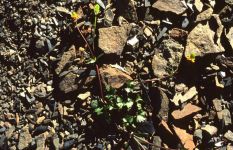Distribution: Occurring in the Olympics and Cascades mountains in Washington; Alaska to Oregon, east to Alberta, Montana, Wyoming and Colorado.
Habitat: Alpine.
Flowers: June-August
Origin: Native
Growth Duration: Perennial
Conservation Status: Not of concern
Pollination: Bees, flies, butterflies, beetles
Perennial with slender, fibrous roots; stems several, slender, ascending to erect, not nodally rooting, 1- or 2-flowered, scape-like, 3-9 cm. tall.
Basal leaves petiolate, the blades glabrous, 1-2 cm. long, cordate or reniform to ovate and rounded at the base, from 3-lobed to deeply dissected into 7-13 oblong segments.
Pedicles up to 6 cm. long; sepals 5, spreading to reflexed, 2.5-4.5 mm. long, yellowish-green but purplish tinged; petals 5, yellow, 3.5-5 mm. long, short-clawed; nectary scale 0.5 mm. long, the lateral margins forming a pocket, the tip truncate; receptacle ovoid-cylindric, up to 7 mm. long; stamens 20-50; pistils 30-80; stylar beak 0.5 mm. long, recurved.
Achenes 2-2.5 mm. long, obliquely ovate.
Publication: Bull. Torrey Bot. Club 18(9): 265. 1891.
Ranunculus gelidus Kar. & Kir. var. grayi (Britton) Hultén
Ranunculus verecundus B.L. Rob. ex Piper [HC, KZ99]
PNW Herbaria: Specimen records of Ranunculus grayi in the Consortium of Pacific Northwest Herbaria database
WA Flora Checklist: Ranunculus grayi checklist entry
OregonFlora: Ranunculus grayi information
E-Flora BC: Ranunculus grayi atlas page
CalPhotos: Ranunculus grayi photos

